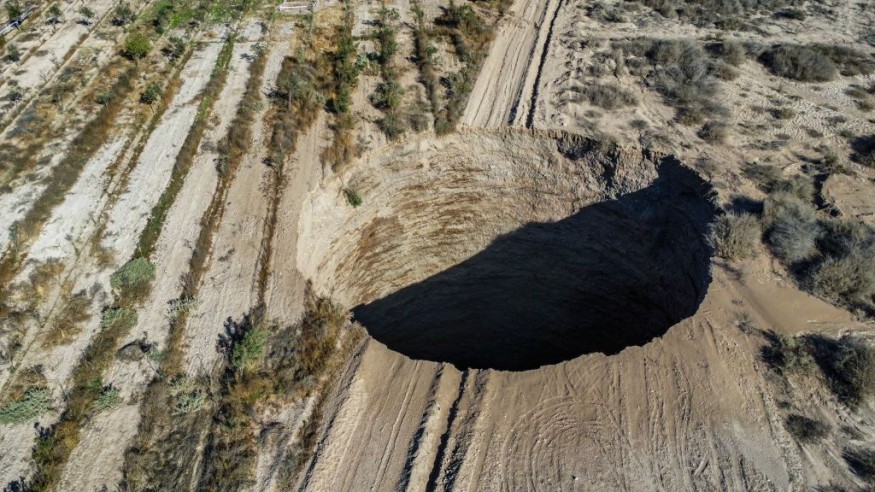A mysterious sinkhole opened up in the Atacama region of Chile earlier this week. Recent reports suggest the massive hole continues to expand in size from at least 25 meters in diameter as of Wednesday, August 3. The sinkhole is located in a commune near Mina Alcaparros of Minera Candelaria (Candelaria mine) in the region.
Local authorities are conducting an investigation to determine if the giant opening was a result of a natural formation or a product of mining activity conducted in the area. The premise of the probe is plausible since the area is known for its widespread mining operations, which locals are reportedly aware of the risks it may pose.
Photos of the hole also circulated online, both on social media and local, international media outlets. While the image of the hole has been perceived to be in a remote area. However, the risk to residents and visitors in the area is imminent. With this, authorities have closed all routes leading to the area.
Sinkholes in the past have been attributed to both anthropogenic and geological causes, as well as to weather-related factors. The location of the phenomenon is also taken into account, particularly if they are within heavily populated urban areas or remote areas.
Chile Sinkhole

Commune Mayor Cristobal Zuniga said they received a complaint from a Chilean citizen on Saturday, 30 July, that a sinkhole appeared near the community, as cited by the American Journal.
Mayor Zuniga adds that the incident is what the community had always feared since the area is surrounded by mining deposits and underground works.
In addition, the local leader the cause and origin of the sinkhole remains unknown at this time, stating "it is still active and growing," as cited by the American Journal.
Also Read: Party in Israel Ends with One Death as Sinkhole Opened Up In the Middle of a Swimming Pool
What is a Sinkhole?
The United States Geological Survey (USGS) states a sinkhole is a form of depression in the ground, which has no natural external surface drainage, emphasizing all of the water stays inside the hole when rainfall occurs.
Sinkholes commonly forms in what geologists call as "karst terrain," as cited by the US seismic monitoring agency. The said terrain is a region where the types of rock below the ground surface can naturally be dissolved by running groundwater circulating through them.
In addition, the USGS mentions soluble rocks like salt beds, domes, gypsum, limestone, and other carbonate rock are susceptible to sinkholes. In particular, the state of Florida sits above limestone, which are at high risk from such ground openings.
Global Sinkhole Incidents
In recent years, sinkholes have occurred in multiple countries worldwide. Some of these events transpire even in the middle of a city, addition to their occurrences in a plain, forested land, or desert.
The following are some of the recent sinkholes reported in different locations, as compiled by ABC News
- In Mexico, a sinkhole opened up in a crop field in Santa Maria Zacatepec in May 2021.
- In Italy, cars were swallowed by a sinkhole in Rome in May 2021.
- In the US, a long sinkhole measuring dozens of feet in length struck a condominium complex in La Habra, California.
© 2025 NatureWorldNews.com All rights reserved. Do not reproduce without permission.





